For a long time the top slot in Nikon’s APS-C (DX) format SLR line-up was occupied by the popular D300S, but that camera dates from 2009 and production ceased ages ago, leaving a vacancy that Nikon photographers have been wanting to see filled for years.
During that time there’s been plenty of rumour and speculation, but earlier this year, as I headed out to the Consumer Electronics Show (CES) in Las Vegas, I had a hunch that Nikon might be about to deliver what so many photographers had been hoping for.
Happily I was right, and the D500 was announced alongside Nikon’s new flagship, the D5. The D500 is aimed at serious enthusiast and professional photographers who want a smaller, lighter camera than a full-frame (FX) model such as the D810 or D5. It’s also designed for pros who want the focal length magnification of the DX-format sensor.
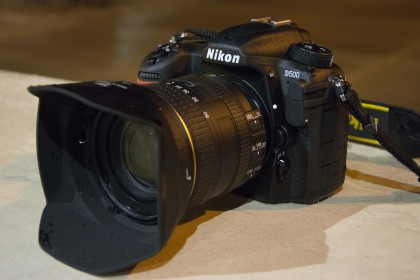
One surprise about the D500 is that its APS-C sensor has 20.9 million effective pixels, less than the company’s other recent (24MP) DSLRs of the same format; this is to enable the photosites to be bigger, to improve low-light performance.
Interestingly, the D5 announced at the same time has 20.8 million pixels on its full-frame sensor, and the two cameras use the same sensor architecture, built to Nikon’s specification; if the D500’s sensor was scaled up to match the D5’s it would have 48.6 million effective pixels.
Key features
There are several other similarities between the two new cameras which make the D500 an exciting proposition. The new EXPEED 5 processing engine, for example, is the same, as is the 153-point Multi-CAM 20K autofocus system with 99 cross-type points. As on the D5, the D500’s AF central point is sensitive down to -4EV while all the other points are sensitive down to -3EV, potentially making this a very capable camera in low light.
The processing engine also brings a maximum continuous shooting rate of 10 frames per second (the D5 can hit 12fps) for up to 200 14-bit lossless compressed raw files, as well as the ability to record 4K UHD movies. It all adds up to a pretty enticing package for sports and action photographers.
In addition to the imaging sensor there’s a new 180,000-pixel RGB sensor to handle metering and white balance, as well as informing the automatic scene recognition system to help improve autofocusing with better subject detection.
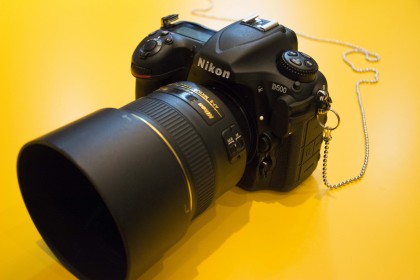
Having the same pixel count as the D5 but on a smaller sensor means the D500’s photo receptors are smaller, and this naturally has an effect on their light gathering power and low-light performance. Consequently the D500 doesn’t have quite the same outlandish sensitivity range as the D5: its standard range is ISO100-51,200, with five expansion settings taking it up to the equivalent of ISO1,640,000 – a stop lower than the D5’s maximum of ISO3,280,000, but still an incredibly high figure.
Whereas the D5’s 4K shooting capability is limited to three minutes, it’s possible to shoot 4K UHD (3840 x 2160) 30p/25p/24p video for up to 29 minutes and 59 seconds with the D500. As usual there are lower-resolution video modes, and Full HD footage can be shot in 60p for slow-motion playback. In addition, 4K UHD time-lapse movies can be created in-camera, and there’s electronic Vibration Reduction to reduce the impact of camera shake when shooting movies hand-held.
Like the D5, the D500 has a 3.2-inch 2,359,000-dot screen that’s touch-sensitive. Unlike the D5, however, this can be used to set the AF point – the D5’s is limited to use when reviewing images and inputting text for copyright information and the like.
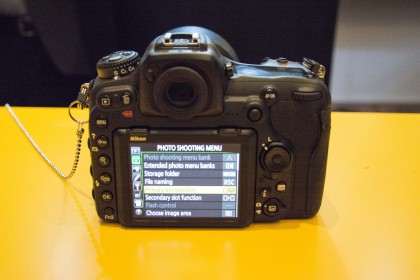
Another feature that distinguishes the D500 from the D5 is the presence of Nikon’s new SnapBridge technology, which enables the camera to stay permanently linked to a smart device over a low-power Bluetooth connection (or via Wi-Fi). This means that after the first connection has been made images can be transferred automatically to your phone whenever you shoot, and they should be ready to be shared via the internet when you pick up your phone.
As befits a camera aimed at professionals and serious enthusiasts, the D500 has two card slots: one accepts SD-type media while the other is for the faster XQD cards. Although they’ve been around for quite some time, XQD cards haven’t become commonplace yet, with most cameras only accepting SD-type media, but this could be set to change.
While the D500 doesn’t have a full metal body like the D5, its metal chassis is more durable than the D300S’s. The degree of weather sealing is also greater, so the camera can be used in harsher conditions. Nikon has also omitted a pop-up flash to make the D500 sturdier, and the hotshoe is supplied with a weatherproof seal to protect it when a flashgun isn’t mounted.
The camera certainly feels solid and durable, without having the weight of its full-frame sibling. On the front there’s a decent grip with a textured coating, while a ridge on the back marks the thumbrest, making for a comfortable holding experience.
All the direct controls you’d expect are present, along with a ridged mini-joystick controller for selecting the AF point quickly when the camera is held to your eye; this sits just to the left of the natural resting position for your thumb on the back of the camera, and is within easy reach. A little lower down is the familiar rocker-style navigation pad with central button, for scrolling through the menu and making settings selections.
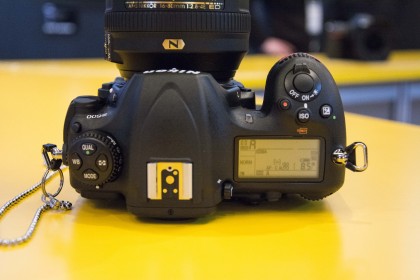
It’s worth noting at this point that settings can’t be selected, nor the menu navigated, using the screen’s touch control. However, as mentioned earlier, it is possible to input text (for example for copyright information), set the AF point or scroll through and zoom into images with taps and swipes on the screen. The screen is responsive, and it would be nice to have the option to use it a bit more than Nikon has allowed here.
The screen’s high resolution means images are very sharp, with plenty of detail visible. The tilting bracket is one of the most rugged-feeling that I’ve used, and has clearly been made with durability in mind.
As the D500 is an SLR it has an optical viewfinder, and, as usual with a high-end camera, Nikon has opted for a pentaprism version for the D500. This provides a 100% field of view when shooting in DX format, or 98% when shooting with the 1.3x magnification option selected. The view is nice and bright, and when shooting at the maximum frame rate the blackout time is very brief, so it’s easy to keep up with fast-moving subjects.
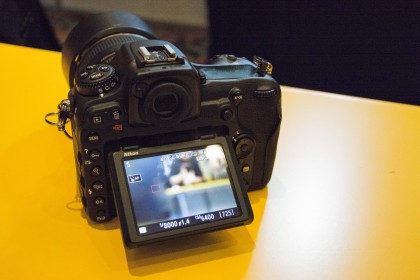
As with some other Nikon SLRs, including the D5, it frustrates me that the information screen brought up by pressing the Info button isn’t interactive, and that the options revealed by pressing the ‘I’ button aren’t customisable, especially as the options aren’t those that you need to use on a shot-to-shot basis. It would also be nice if the Info screen could be made interactive, and operable via touch control.
In other respects the D500’s control arrangement is good, and in line with other high-end Nikon SLRs. However, when walking with the camera on a strap over my shoulder I frequently found that the focus selector lock (around the navigation control) had activated accidentally, and I had to turn it off before I could change the AF point.
Snapbridge
The D500 is the first camera to feature Nikon’s SnapBridge technology, to enable speedy image transfer of images to a smartphone or tablet for sharing online. At the time of writing only the Android version of the SnapBridge app is available, with the iOS app set to follow later in the year.
Once the app is installed on your smartphone or tablet you’re taken through the steps of registering with Nikon Image Space. After selecting ‘Connect to smart device’ in the D500’s set-up menu the on-screen guide takes you through the steps of making a connection to the device.
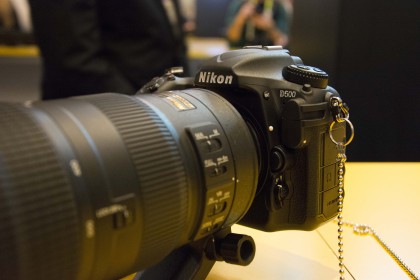
With an NFC (near field communication) enabled device it’s just a case of tapping it against the camera’s NFC logo at the appropriate time, and the connection is made with no need to input a password. Images transfer in the background while you continue to shoot, but you can also choose to download specific images to your phone for sharing.
I found the image transfer worked well – it’s great that images can transfer automatically without the battery running down quickly, or connections having to be made repeatedly.
SnapBridge will also enable you to control the camera remotely, which is a handy alternative to using a remote release when you need to avoid touching your camera and creating image blur, or when you want to be in group portraits; however, at the time of writing this feature isn’t working.
Scrolling through the images I’ve shot on the Nikon D500 confirms that it does most things well most of the time. The vast majority of images are well exposed, have attractive, accurate colours and are sharp. Video quality is also high.
Examining images in more detail reveals that low light performance is very good within the native sensitivity range. Images taken at the lower sensitivity settings have lots of detail, achieving excellent scores in our resolution tests. This starts to drop off at ISO6,400, but the results at ISO12,800 are still very good, with just a hint of chroma noise in raw files viewed at 100% on screen.

Click here for the full-resolution image
This coloured speckling becomes more obvious at ISO25,600, and more so again at ISO51,200 (the highest native value), but it’s well within acceptable limits. Beyond this value the expansion settings are there if you need them, but they deliver results that Nikon doesn’t consider entirely satisfactory.
Results using the first of these settings, Hi 1 (ISO102,400) are actually pretty good for such a high value, but banding starts to creep into images shot at Hi 2 (ISO204,800), and is visible in the darker areas of images sized to A4.
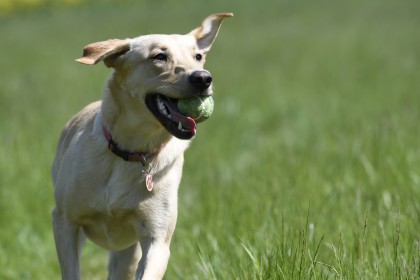
Click here for the full-resolution image

Click here for the full-resolution image
It’s not really worth using the values above these two settings, as there’s lots of noise and subjects become increasingly lost in the murk. Don’t be deceived by the results you may see taken in good light; in the dark conditions that demand these settings it’s a different story, and we struggled to recognise objects shot at Hi 5 (ISO1,640,000).
Sports and action photographers are unlikely to be disappointed by the D500’s autofocus performance; it’s very fast, and very accurate. It adjusted focus quickly when I shot skateboarders in London’s gloomy Undercroft on the Southbank, and kept track with them effortlessly.
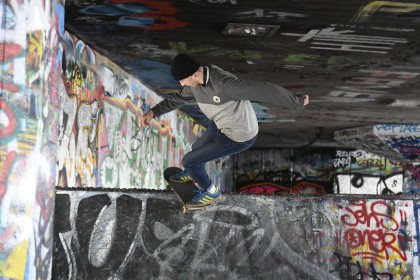
Click here for the full-resolution image
A bounding labrador proved a more challenging subject, moving erratically around the frame, but it was rendered sharp as long as the active AF point or group was in the right place. However, despite good colour contrast between the dog’s golden coat and the green grass, the 3D-tracking system wasn’t able to cope, only occasionally highlighting the target and delivering the odd sharp image.
The contrast detection AF system that operates when the camera is in live view or video mode seems a little better than the ones in Nikon’s other DX format cameras, but as this uses the imaging sensor it could be down to the improved noise control. Even in bright light there are some backwards and forwards adjustments before the subject is sharp, but it doesn’t get much worse in low light.

Click here for the full-resolution image
It’s not as fast as systems in most compact system cameras, but it’s reasonable, and it can be used when the camera is hand-held, although moving subjects are best avoided. The visible adjustment means that manual focus is still going to be the preferred option for video shooters who need to adjust focus while recording.
The D500’s automatic white balance and metering system didn’t throw up any unpleasant surprises during my testing. The general-purpose Matrix metering system also put in a solid performance, recommending balanced exposure values in a wide range of situations. It copes especially well with bright subjects, rarely causing the underexposure we might traditionally anticipate; with that in mind it’s worth keeping an eye on the histogram view and the brightness of the screen, because it’s easy to misinterpret what you’re seeing and dial in unnecessary exposure compensation.
We chose three rival cameras for the Nikon D500 to see how it measured up in our lab tests: the Nikon D750, the Canon EOS 7D Mk II and the Pentax K-3 II.
We’ve carried out lab tests on the Nikon D500 across its full ISO range for resolution, noise (including signal to noise ratio) and dynamic range. We test the JPEGs shot by the camera, but we also check the performance with raw files. Most enthusiasts and pros prefer to shoot raw, and the results can often be quite different.
Nikon D500 resolution charts
We test camera resolution using an industry-standard ISO test chart that allows precise visual comparisons. This gives us numerical values for resolution in line widths/picture height, and you can see how the Nikon D500 compares with its rivals in the charts below.
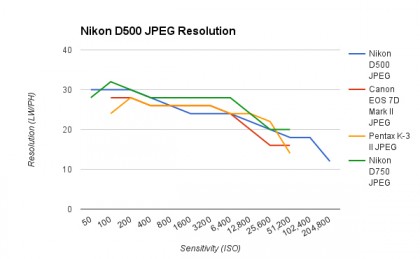
JPEG resolution analysis: Despite its lower resolution and smaller sensor size, the 20MP D500 compares well with the 24MP D750. It also beats or matches the 20MP 7D Mk II at most sensitivity settings.
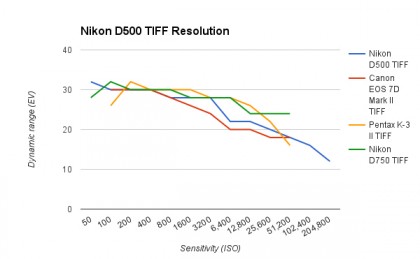
Raw (converted to TIFF) resolution analysis: The cameras are closely matched at low to mid-range sensitivity settings, but the Nikon D750 shows the benefit of its larger photosites, helping it to resolve more detail at higher sensitivity settings.
Dynamic range is a measure of the range of tones the sensor can capture. Cameras with low dynamic range will often show ‘blown’ highlights or blocked-in shadows. This test is carried out in controlled conditions using DxO hardware and analysis tools.
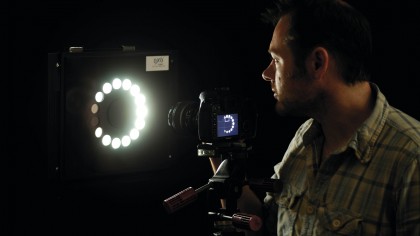
Read: Noise and dynamic range results explained
Dynamic range is measured in exposure values (EV). The higher the number the wider the range of brightness levels the camera can capture. This falls off with increasing ISO settings because the camera is having to amplify a weaker signal. Raw files capture a higher dynamic range because the image data is unprocessed.
Nikon D500 dynamic range charts
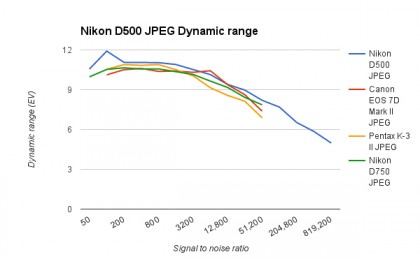
JPEG dynamic range analysis: The D500’s JPEG files have impressive dynamic range, indicating that they contain a broad range of tones.
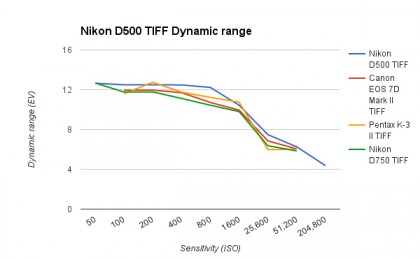
Raw (converted to TIFF) dynamic range analysis: This graph shows the underlying dynamic range of the cameras; the JPEG figures can be somewhat skewed by the manufacturers’ preferred contrast level. The D500 has the widest range at the majority of sensitivity settings.
This is a test of the camera’s noise levels. The higher the signal to noise ratio, the greater the difference in strength between the real image data and random background noise, so the ‘cleaner’ the image will look. The higher the signal to noise ratio, the better.
Nikon D500 signal to noise ratio charts
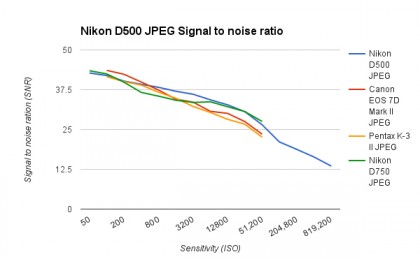
JPEG signal to noise ratio analysis: Apart from at the lower sensitivity values, the D500 leads the way for much of the range, indicating that noise is controlled well. Its nearest competitor at high sensitivities is the full-frame Nikon D750.
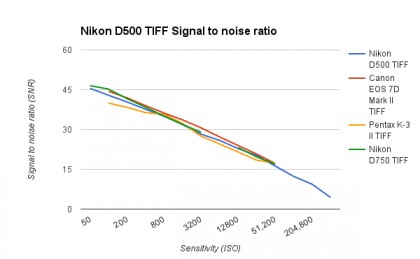
Raw (converted to TIFF) signal to noise ratio analysis: As this chart shows, it’s a very close-run race, with little difference between the noise levels recorded by the cameras. The Canon 7D Mk II has a very slight edge.
Sample Nikon D500 ISO test results
The signal to noise ratio charts use laboratory test equipment, but we also shoot a real-world scene to get a visual indication of the camera’s noise levels across the ISO range. The right side of the scene is darkened deliberately because this makes noise more obvious.
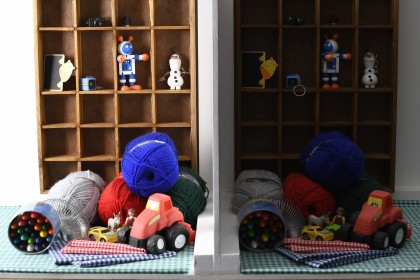
ISO 200: Click here for a full-size version
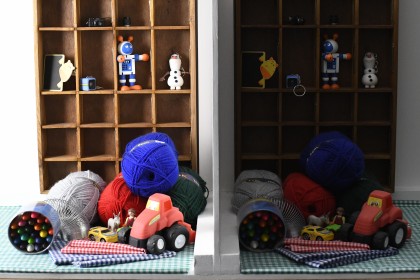
ISO 6400: Click here for a full-size version
While some may be a little disappointed that the D500 doesn’t have 24 million pixels on its sensor like Nikon’s other recent DX-format SLRs, the rest of its specification is very impressive, and it’s likely to prove particularly attractive to sports and action photographers. The autofocus system is especially enticing, capable as it is of getting moving subjects sharp in difficult lighting conditions.
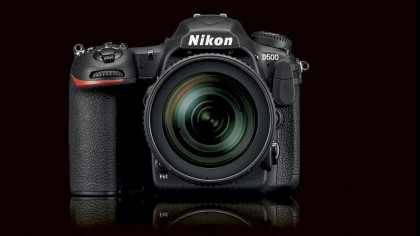
Noise is controlled well throughout the native sensitivity range (ISO100-51,200), and even the results at ISO102,400 look pretty decent. The top expansion setting, however, is largely pointless; its results look much better in reasonable light, but in the dark conditions that really demand such a setting there’s lot of noise in raw files and smearing of detail in JPEGs, making subjects hard to identify.
It would be easy to dismiss SnapBridge as just another small step in the move towards a more connected world, but I think it’s actually a significant one. It enables you to keep your camera and phone connected, and to transfer images without clogging up the memory too quickly, or flattening either the camera or the phone battery.
We liked
The D500’s robust build means it’s more capable of withstanding heavy use than Nikon’s existing DX cameras, and it can be used with confidence in poor weather. It’s also great that Nikon enthusiasts now have a high-level camera they can upgrade to without having to opt for a full-frame model – that’s especially important for those who have an extensive collection of DX-format lenses.
Further good news is that for less than half the price of the D5 you get a lot of the same technology, including Nikon’s top-end autofocusing and metering systems.
I love the fact that shots I’ve taken on this camera can be transferred automatically to my phone – it’s really useful when you’re out in the field and fancy sharing a few images.
We disliked
I only have a few relatively minor issues with the D500, and they’re things I’ve complained about before with some other Nikons. It’s high time Nikon streamlined its DSLR interface a bit, and sorted out the I/Info button issues.
The Focus selector lock could do with being a bit tighter, so that it doesn’t flick round so readily when the camera is being carried on your shoulder and is bumping against your body.
Final verdict
The D500 is an excellent camera, and one that will serve many enthusiasts well, giving them the first-rate systems they desire in a smaller, more affordable body than the D5.
Many will be mulling over whether to go for the D500 or a full-frame camera like the Nikon D750. The D750 is a good all-rounder that controls noise a little better, but if speed and/or durability are key concerns, the D500 is the one to go for. It’s also a better choice if you have a collection of DX-format lenses and no FX (full-frame) optics – although it has the chops to resolve plenty of detail, so don’t be tempted to use inferior glass.